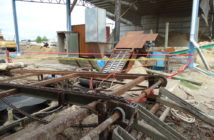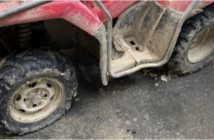Hand injuries at work account for over 20% of all workplace injuries, according to the U.S. Bureau of Labor Statistics, with workers in construction, maintenance, and natural resources fields having a higher risk of hand-related injuries than other industries

While most common hand injuries include small lacerations and punctures, the risk of amputation or loss of limb function is high. Hand injuries accounted for 29.6% of injuries in construction, maintenance and natural resources, while all other occupations only had a 12.7% average. It is essential to understand how common these injuries are and how to prevent them.
Common Workplace Hand Injuries
There are many ways hand injuries occur. However, the most common injuries include:
- Lacerations
- Avulsions or detachments
- Punctures
- Crushes
- Fractures
Lacerations are the most common form accounting for approximately 63% of all hand-related damage. Crushes come in second with 13% of reported hand injuries. Avulsions, punctures, and fractures account for about 20% of reported injuries.
Most often, an injured hand at work is caused by human error. This doesn’t mean that workers are under-trained or unfit to do the job at hand. The error is often caused by distractions and a tendency to grow complacent in a job they’ve worked at for years.
Repetitive strain is also a common cause of hand injuries. Sometimes, something as simple as a regimen of hand stretches can keep strain injuries at bay.
Hand Injury Hazards
Before workers can focus on how to prevent hand injuries at work, they must be aware of the types of hazards that they might face. Three main risks account for mishaps.
1. Personal Hazards: A personal hazard is caused by something the worker is wearing that causes an accident. These items include jewelry, such as a watch or wedding band, loose clothing, or defective personal protective equipment.
2. Mechanical Hazards: Mechanical hazards include any situation where the hand or fingers can be crushed, severed, pinched, or caught. These instances involve moving parts such as gears, chains, or rollers. The hazard also includes objects that fall on the hand or fingers or anything that can cause damage while handling it. Hand tools do fall under mechanical dangers if they are not in good working order or if they’re handled incorrectly.
3. Contact Hazards: Contact hazards include anything that causes cuts to the hand or fingers. These types of risks include sharp edges on tools, packaging, containers, and other materials. Debris found in manufacturing can also fall into this category. While most contact hazards focus on cutting or puncturing the hand or fingers, items that can cause burns, such as chemicals, electrical currents, or extreme temperatures, also fall into the category.
Preventing Hand Injuries at Work
There are three main areas that employers and workers can address to help prevent workplace injuries: administrative control, engineering controls, and personal protective equipment (PPE).
Management should implement procedures to help prevent workplace accidents. Safety training, lockout/tag out rules, warning signs, and the use of ergonomic principles are just a few of the administrative controls that management can use.
Engineering controls can help to reduce hazards by implementing equipment with built-in protective measures. Safety guards built into the machines help to keep workers’ hands from accessing sharp objects, pinch points, or rotating parts. Emergency stop devices allow workers to stop the machine to prevent injuries. Some machines have a feature that causes the machine to stop instantly when it meets soft tissue.
While gloves are essential PPE for some jobs, it is better to eliminate the risk of lacerations and punctures rather than simply to protect from it. The use of safer blades can help reduce the number of cuts.
Types of Gloves to Prevent Hand Injuries
Using the proper PPE when working helps to prevent injuries. To protect the hands, gloves are industry standard. What type of glove depends on the kind of work performed. The different types of gloves include:
- Leather: suitable for uses around sparks, chips, rough objects, and heat
- Non-conductive: suitable for use around electrical components to protect against low-voltage electricity.
- Heat Resistant: suitable for use when there is excessive heat to prevent burns and heat discomfort.
- Metal Mesh/Tough synthetic yarn: suitable for use around knives and sharp objects to prevent cuts and punctures
- Vinyl/Nitrile/Latex/Neoprene: suitable for use in areas where petroleum products and chemicals are used to protect against chemical burns. Also useful in hospital conditions to protect against blood-borne illnesses.
- Waterproof: suitable for use in wet environments, these gloves often have foam insulation to protect from cold.
- Cotton: suitable for working in dirt and when chafing is possible, to protect against abrasions
Understanding workplace hazards which may cause injuries is paramount. By following proper training and wearing appropriate PPE, workplace injuries are reduced or avoided. It is up to both workers and management to be aware of the hazards that cause hand injuries at work.



